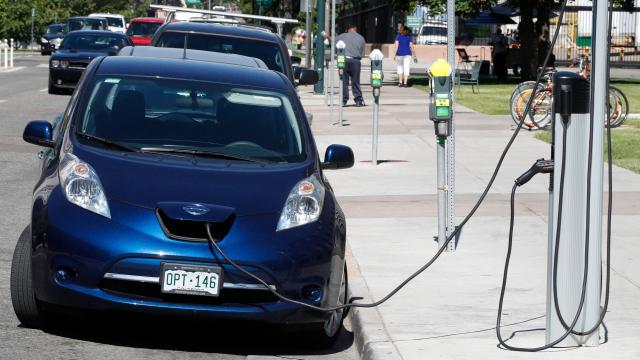This week, group of economists released an analysis that attempts to answer how much the average American drives their electric vehicle. While it shows people drove electric cars fewer kilometres than gas-powered ones, the results might not reflect the rapidly changing electric vehicle landscape.
Currently, California, where roughly half the electric vehicle users in the U.S. live, measures usage by collecting individual data from drivers who elect to install a special smart metre — that happen to cost a cool $US10,000 ($12,944) to $US15,000 ($19,416).“You can imagine it’s not the average U.S. household” reflected in this data, said Fiona Burlig, a University of Chicago economist and one of the coauthors of the National Bureau of Economic Research analysis.
To solve this problem, Burlig and a team decided to try and use a whole host of data to get a charging sample that was more representative of how normal Americans may use their electric vehicles. They created an intricate comparison system using PG&E service ranges, DMV registrations, data from public charging ports, energy use data from different car models, and smart metre data from before and after an EV arrived in the home to try and extrapolate just how much average people were charging their cars at home. All in all, Burlig said, the analysis captured data from 350,000 individual electricity meters, encompassing around 64,000 electric vehicles.
The findings were surprising: It looked like electric vehicle owners just weren’t using their cars that much. The analysis found that electric vehicles travelled “substantially lower” distances than gas-powered cars in the same areas at just 8,530 kilometres per year, and used less than half of the energy estimated by state regulators due to this lower use time. The authors said that more work is needed to determine why this number was so low, but speculated that range anxiety — the fear that your car will run out of juice on the road — as well as electric vehicle owners owning multiple cars could play a role.
But it’s possible that electric vehicles are developing at such a rapid pace that it makes studies like this almost pointless in deriving information about drivers. A key point of contention for many electric vehicle boosters is that the analysis only looks at data between 2014 and 2017, “before the release of affordable longer range electric vehicles,” Max Baumhefner, a senior attorney at NRDC, said. (You may have just heard of Tesla’s Model 3, which has broken a whole bunch of EV sales records — and which only came on the market in 2018.)
“[The analysis] basically proves something that anybody driving a first-generation Nissan Leaf could have told you: a shorter range first-generation EV can’t drive as far,” Baumhefner said.
Not to bash the old-school Leafs too much, but their stats do pale in comparison to what’s on the market now. A 2014 Leaf could only make it only 135 kilometres on a full battery while the 2017 model, which is when the NBER analysis stopped, could go for 173 kilometres. The 2021 standard Leaf model, by contrast, can cruise for 240 km. Meanwhile, Tesla’s Model S — which is pricier than the Leaf and uses more electricity — has a range of 644 km. And analysts predict that plunging battery costs means that even more types of eletric cars could be available to folks at very affordable prices in the next couple of years.
As for range anxiety, we’ve also made some pretty big strides there, too. The number of electric charging outlets in the U.S. doubled between 2014 and 2018. There’s still a lot of work to be done to make plugs more readily available to everyone, Baumhefner said, but as electric vehicles get more popular cities, states and utilities are making a slew of commitments to build up infrastructure over the next decade. The U.S. government under Joe Biden could make even more strides as well.
“We fully acknowledge that the 2017 electric vehicle fleet looks different than the 2021 electric vehicle fleet,” Burlig said. “We’re definitely not claiming that our sample is fully representative of every electric vehicle there ever has been or will be.”
But Burlig cautioned against drawing any easy conclusions from this comparison, noting that the early electric vehicle adopters the analysis captured might be “super gung-ho” about driving their car compared to the average person and that usage between early and later adopters didn’t change much over the three years surveyed. She said her team is “in discussions” about extending the sample, but that the huge sets of data used in the analysis “are a pain to obtain.” Meanwhile, car manufacturers like Tesla, she said, are collecting even more data on drivers’ use patterns — but are currently not required to share that data with anyone.
“That could be an easy solution to this problem,” Burlig said.
